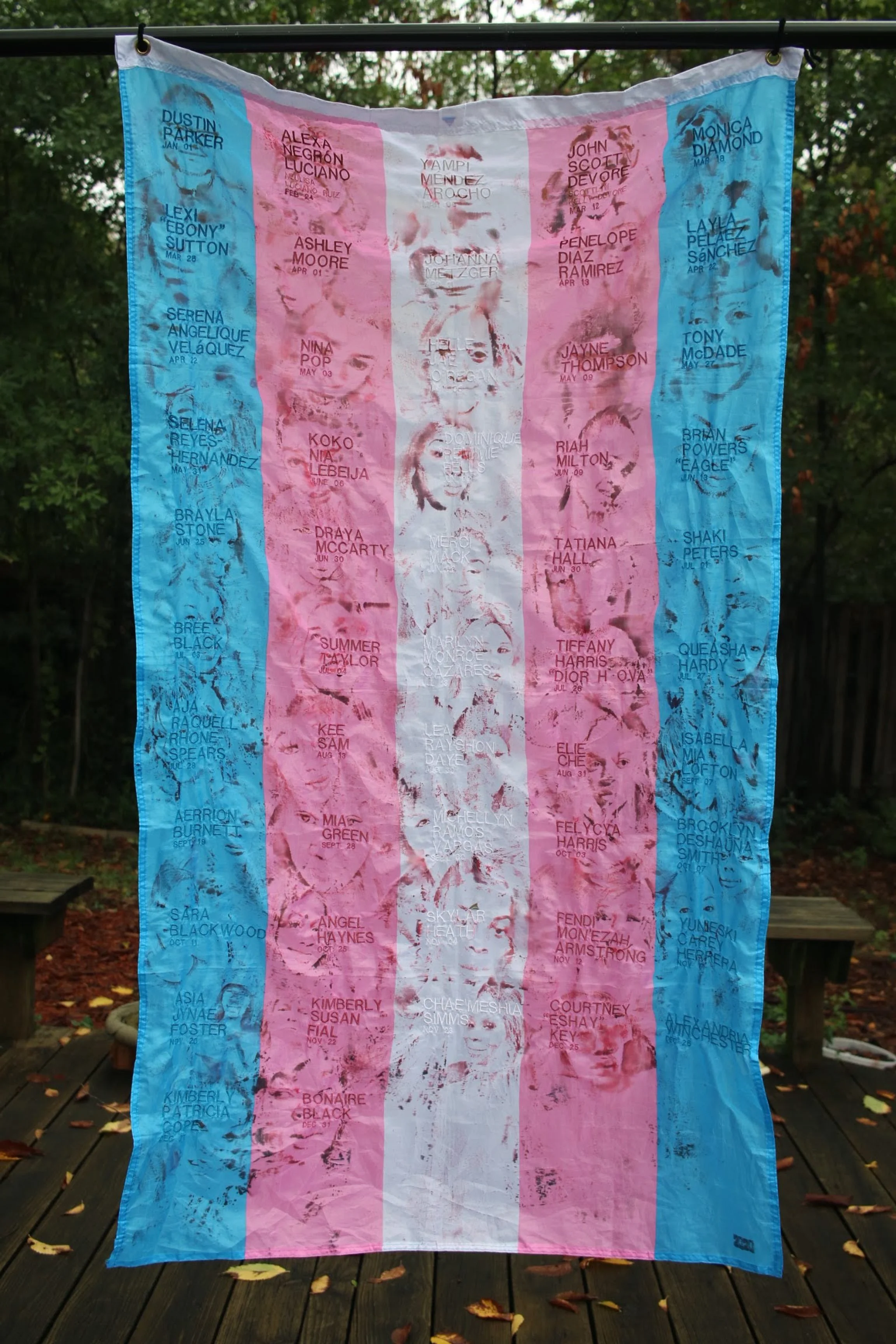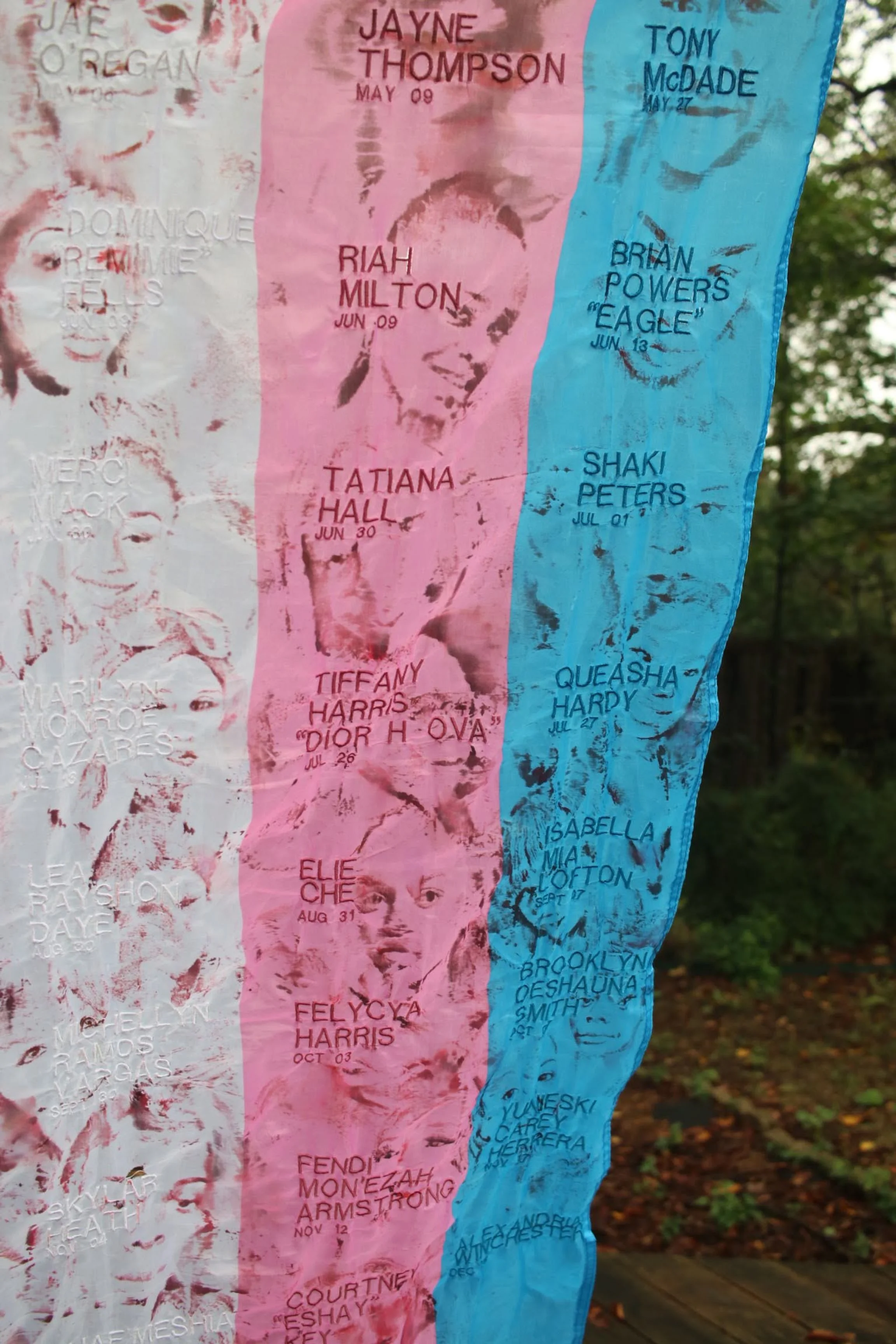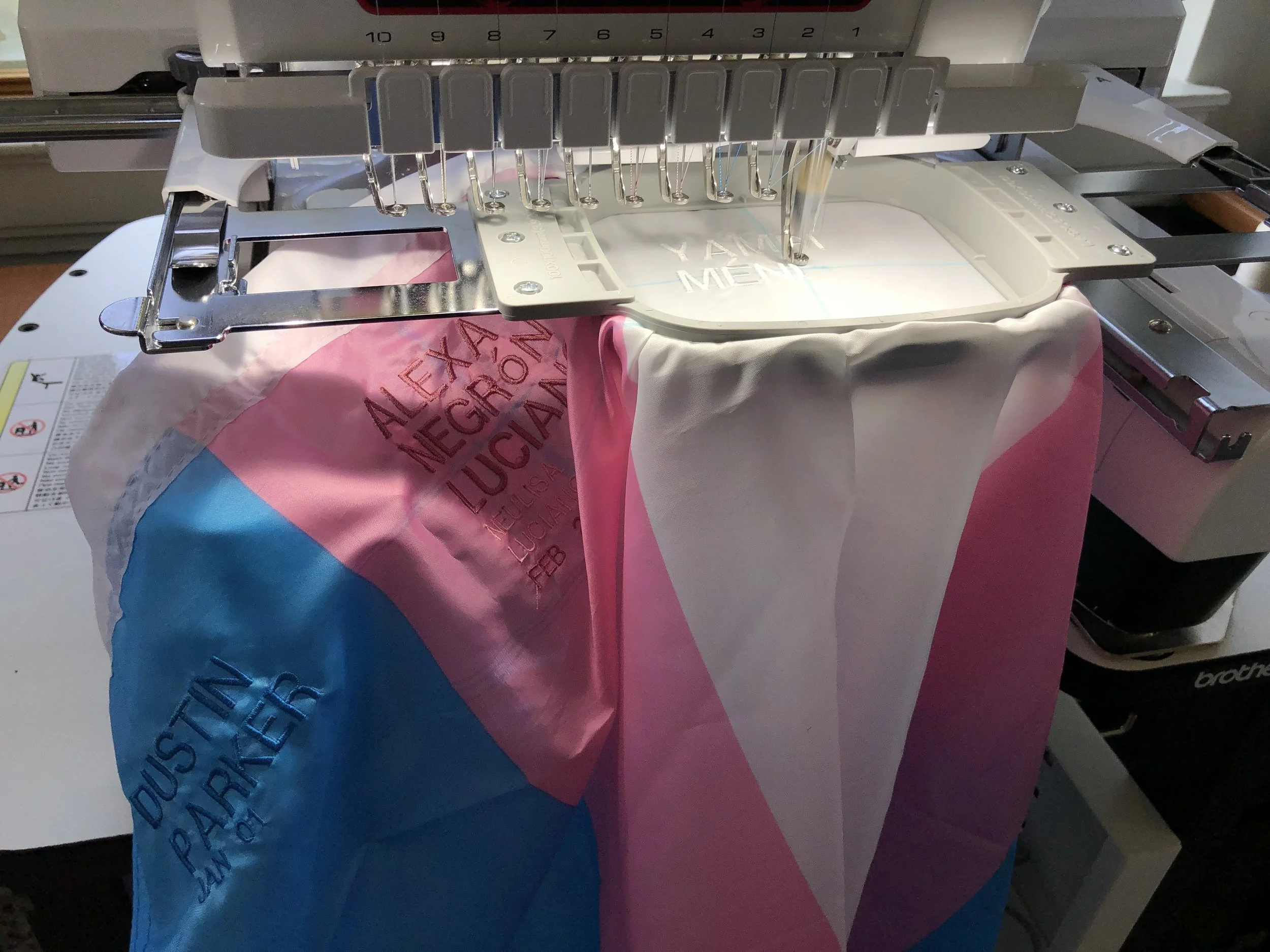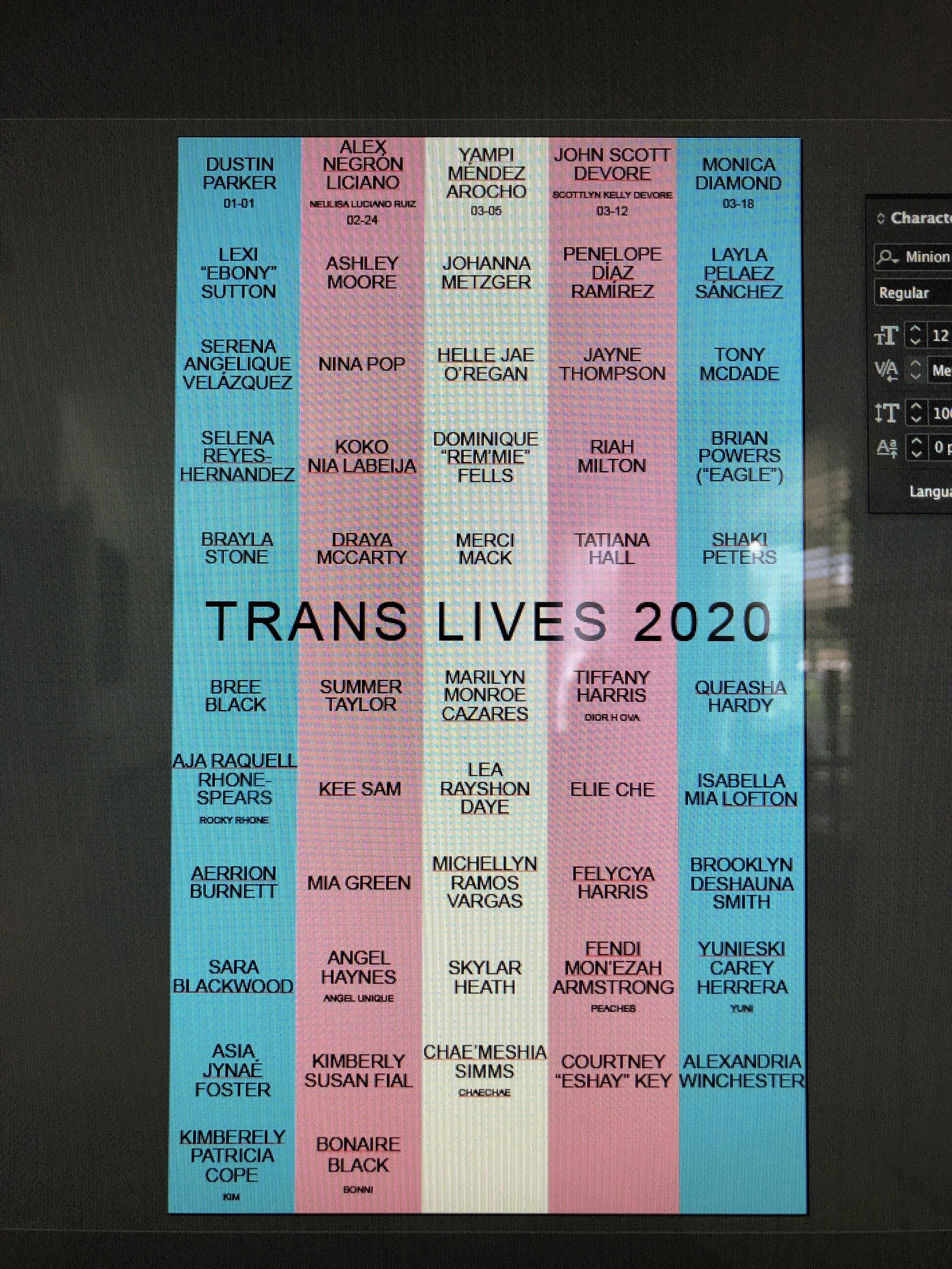Trans Lives (On-Going Series)
Anti-transgender violence has become a national epidemic that continues to be veiled issue. Since 2013, the Human Rights Campaign and other advocates have recorded an average of 22 transgender and gender non-conforming people that have been victims of fatal violence per year & this number continually increases. At least 89% of these victims have been people of color with most under the age of 30. As of December 1, 2019, 22 transgender and gender non-conforming people in the U.S. have been reported killed yet this number is likely higher due to some victims’ death going unreported, while others may not have been identified as transgender or gender non-conforming in the media, due to authorities, journalists, and/or family members not wanting to acknowledge their gender correctly.
TRANS LIVES 2021
In Progress shots of Trans Lives 2021
TRANS LIVES 2020
Mockup & In Progress shots of Trans Lives 2020
TRANS LIVES 2019
In “Trans Lives 2019,” 27 lives are displayed in this project based on a report/spreadsheet on Transgender Day of Remembrance’s website. These include two individuals that died while in police or ICE custody and a few that were not reported as trans violence but have suspicious appearances; they do not include suicides. Developed in 2018 as an annual project, the first project centered on names with black text on a black canvas but also addressed the invisibility of how each person identified. In “Trans Lives 2019,” the focus was to give a face to the names of trans and gender non-confirming people that have been killed in the U.S. The portraits are distinctive yet blurred to mirror specific facial features, while signifying how parts of their personality are often obscured; there’s less depth visually, representing the way people dehumanize and emotionally detach themselves from the tragedy of violence against transgender and gender non-conforming people. Red-colored impressionistic portraits have been embroidered on gauze. Gauze, left white, is utilized to illustrate the delicate fabric of life and the red thread, used to indicate the brutal aspects that happen to the body. Red is used to symbolize the literal and figurative bleeding that has and is happening within this community. The “bleeding” is continued on the background with the red fabric backing that extends and flows on to the floor and into its forward space. The overall project also pays tribute to the NAMES Project Foundation’s AIDS Memorial Quilt within a hung tapestry and quilt like fused fabric, by giving name and space to an overlooked population within the LGBTQ community; its a continual project that may never have a finality. More portraits may need to be added until the end of the year and more names will be added year after year.
TRANS LIVES 2018
The Trans Day of Remembrance website reports that in 2018, 37 trans individuals were killed, completed suicide, or died in custody. This project includes the names of trans individuals who were reported killed in 2018. The project, as shown in the pictured, was completed in October 2018, and the remaining reported deaths and suicides were not included. The remaining 15 canvases are still to be updated as of Nov 2019.
22 individual 8" x 10" canvases are shown in this image. Acrylic on canvas. 8" x 10" x 0.75" / each











